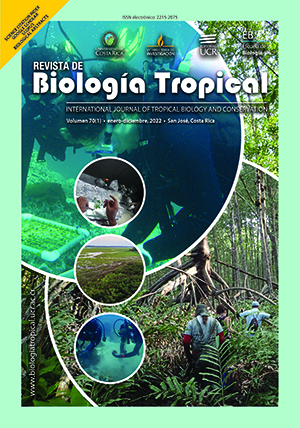Resumen
Introducción: El bivalvo Anadara tuberculosa es un recurso pesquero y económico importante en el Pacífico Este Tropical. La proporción sexual varia a lo largo de su área de distribución, con casos de aparición de hermafroditismo, ocasional para algunas poblaciones, normal en otras. Estas características podrían ser una respuesta a presiones antropogénicas y ambientales. Objetivo: Evaluar la proporción sexual y el hermafroditismo en la especie en el Pacífico de Panamá. Métodos: Se analizó información reproductiva de A. tuberculosa generada entre 1994 y 2020 para el Golfo de Montijo, así como datos de 2017 para el manglar de David. Se aplicaron procedimientos macroscópicos, contrastados con histológicos y se generó un factor de corrección para ajustar la proporción sexual macroscópica, debido al efecto, sobre la proporción sexual, que ocasiona los organismos indeterminados. Resultados: Para el Golfo de Montijo, la histología indicó una proporción sexual hembra a macho de 1:1 hasta 3.2:1, entre 1994 y 2017, mientras que la macroscopía varió de 1.9:1 a 5.1:1 entre 2004 y 2020. Para el manglar de David, la histología indicó una proporción sexual de 3.7:1, y de 7.9:1 por macroscopía en el 2017. En ambas localidades, especímenes más grandes mostraron mayor variación en la proporción sexual, pese a la técnica implementada, así como hermafroditismo protándrico no casual en el 2017. Conclusiones: La aparición del hermafroditismo protándrico y los cambios en la proporción sexual indican que la población de A. tuberculosa, en ambas localidades, está respondiendo a presiones antropogénicas y ambientales.



